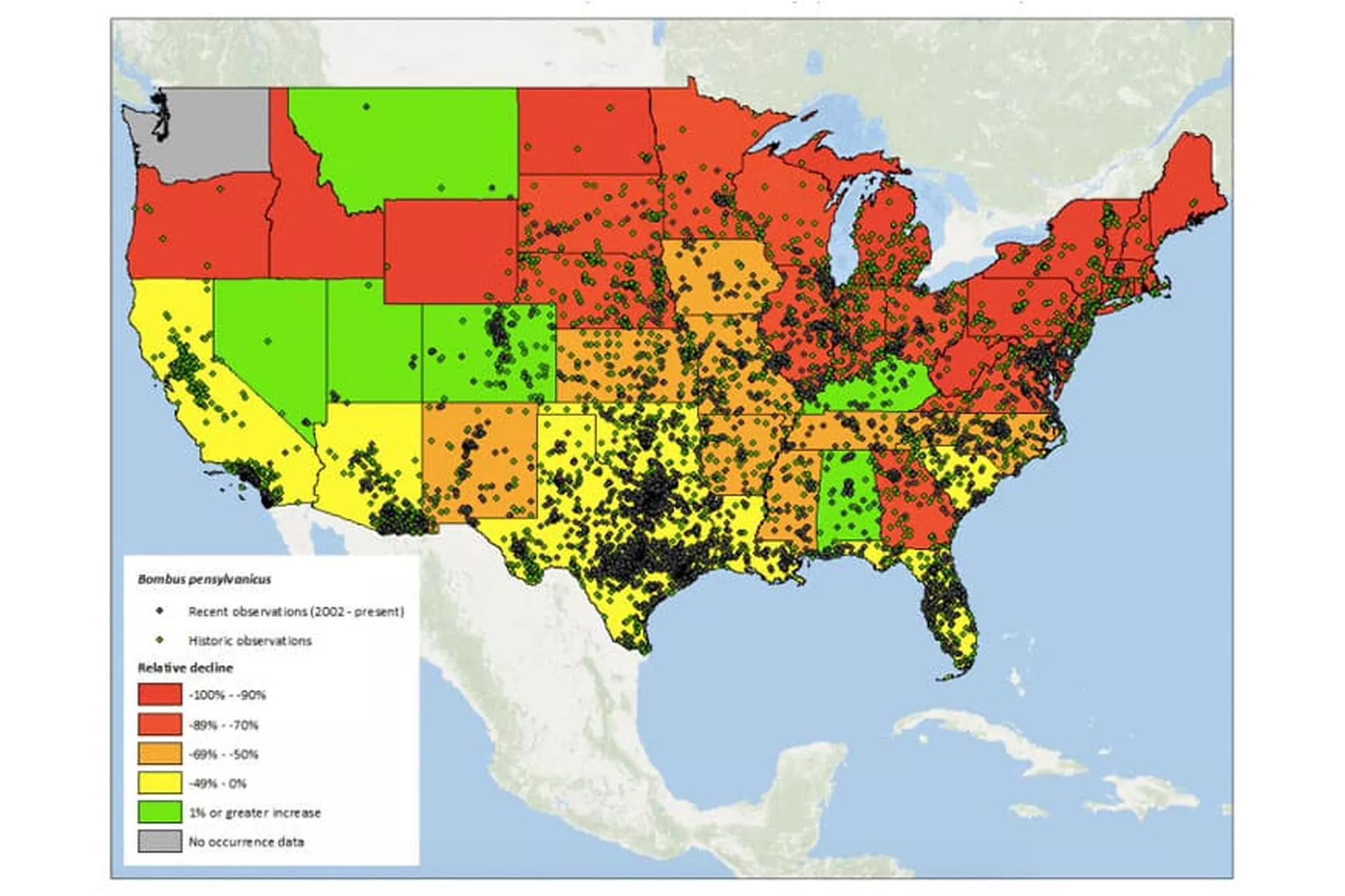Are Bees Endangered in 2023? At-Risk Species and What's Causing a Decline
Are bees endangered? Here are the species currently at risk, the cause of the bee decline, and what happens if bees go extinct.

Published
When we talk about endangered animals, we usually think of tigers and polar bears. But what many of us don't realize is that some species of bees are endangered, too. And scientists say if we don't act now, many others are on the way.
Here, we answer some common questions, including: Are bees endangered? Plus, the at-risk species, why bees are endangered, and what a world without bees would look like. Spoiler: It isn't pretty.
Are Bees Endangered?

Currently, there are several species of bees listed as endangered under the Endangered Species Act of 1973. In 2017, the rusty patched bumblebee became the first bumblebee species to be listed as endangered. A year prior in 2016, seven varieties of Hawaiian yellow-faced bees were listed as endangered.
The Center for Biological Diversity and the Bombus Pollinators Association of Law Students is petitioning to have the American bumblebee listed as an endangered species, too. In a report released in September 2021, the experts say the American Bumblebee was "once a wide-ranging insect," just like the rusty patched bumblebee. But that's not still the case, and protection is crucial.

According to the report, the American bumblebee has "declined by 89% in relative abundance and continues to decline toward extinction." This is due to many factors, including habitat loss, pesticides, climate change, and disease. In the past 20 years, it has completely disappeared from eight states and has become very rare in many others.
Before we discuss ways to help the bees, it's important to understand why so many bees are endangered, as well as what would happen if bees went extinct.
Why Are Bees Endangered?

Bee species are threatened by multiple factors including harmful pesticides that kill bee populations and habitat loss. Harmful chemicals can paralyze or even kill bees. But the main threat to bee populations? Climate change.
As a result of climate change, we're seeing a shift in typical weather patterns. This means extreme conditions such as more powerful storms, heatwaves, and snowless winters. And even though some climate change can be natural, the changes we're experiencing are a direct result of global warming—the heating of the Earth's atmosphere.
If bees lose their homes due to deforestation or extreme natural disasters, they can't reproduce. Thus, bees won't be able to pollinate.
Other factors that can harm bees are unethical industrial beekeeping practices, invasive plants or animals, and parasites and pathogens. However, when we talk about the endangerment of bees, we're talking about the threat climate change poses to bee pollination.

What Happens If Bees Go Extinct?

Honeybees are responsible for about 80% of the world's pollination, and they're dying at high rates. Without bees, plants that rely on pollinators would no longer be able to survive.
If our planet loses both bees and the plants they pollinate, we will see a massive change in several ecosystems. This means animals that feed on bees lose their food source, and plants that need pollination to survive will die out.
The environment isn't the only thing that will be affected by the loss of bees. We'll see a major change in our food supply. Bees pollinate our favorite fruits and vegetables, including melons, apples, and even broccoli. Without bees, we may see a shortage of these produce items on grocery store shelves.
The Takeaway

The answer to your question is yes, bees are endangered. And because bees are endangered, nature, ecosystems, and our food supply are also at risk. However, there are a few ways you can help bee populations.
If you have a garden, or you're looking to plant one, choose to grow pollinator-friendly plants like basil, rosemary, or sunflowers. And avoid using pesticides. Growing these plants organically will have bees flocking toward your garden, and it'll help keep their life cycle going.
You can also support local beekeepers by purchasing organic honey products. Local bee farms prioritize nurturing bee populations. Hopefully, bees will be happily buzzing again soon.

Beijing 2022 Winter Olympics Sustainability: How Eco-Friendly Are the Games?
The Beijing 2022 Winter Olympics is making sustainability a priority. Here are four eco-friendly changes being made this year.

10 Budget-Friendly Sustainable Living Tips to Use in 2023
It's true—sustainability can be affordable for all! Here are 10 simple tips for budget-friendly sustainable living.

6 Makeup Recycling Tips for a More Sustainable Beauty Routine
Makeup recycling can be complicated. Here are six things to keep in mind when recycling cosmetics, from lipstick tubes to eyeshadow palettes.

